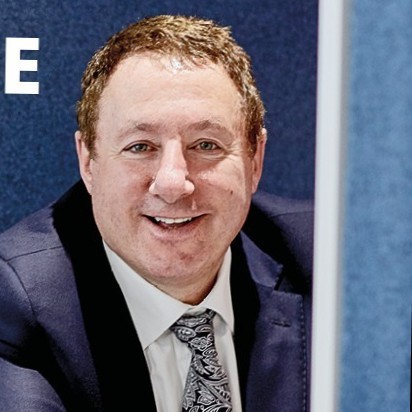CEO’s Blog – Don’t let the blockers hold you back
In business, as in life, there are always people who are resistant to change.
Now that I’m on my third business, I have realised that these obstinate individuals pose a real risk to the growth of an innovative company. They are far more dangerous than they may at first appear.
You know the kind of person I’m talking about:
“We’ve always done it this way and it works fine.”
“It can’t be done.”
“We’re too busy to try that.”
As a leader, it is my job to make sure that everyone in my team is pulling in the same direction, and that they are united by a common goal or dream. It is also my job to help my colleagues deal with blockers on the customer side. Here’s how you do it.
Spotting a blocker
If only this were easy. Unfortunately, blockers come in many guises. The most obvious is the “negative” blocker, who always finds a reason why something can’t be done. But there are also “silent” blockers, who hinder change simply by withholding an opinion or refusing to engage. “Agreeable” blockers are by far the trickiest customers to deal with. They will agree with your plan for change and even seem to be fully behind you… Then do all they can to block you behind the scenes.
Remember that blockers often think that they are indispensable to the business. Look out for arrogance or stubbornness. One common thread amongst blockers is that they refuse to be transparent about their role – they may be lax on paperwork or process, because they feel they are above these petty tasks. If they seem mistrustful of other departments, and are quick to criticise colleagues, that may reveal a tendency to block. If their idea of what constitutes their role is too narrow and intractable, that’s another dead giveaway.
Blockers rarely have original ideas, so ask your team to suggest innovations that could improve the company – or tweaks that would improve current processes. Individuals who consistently fail to contribute any new ideas may be blockers.
Avoid hiring a blocker
You can weed out blockers at the interview stage, if you know what you’re looking for. Ask prospective colleagues to tell you about a time they have effected change at their previous company. You want to gauge whether this individual is someone who gets excited about bringing new projects to life.
Ask how they have dealt with resistance from others – and make sure questions are open: nothing that can be answered with a ‘yes’ or ‘no’.
It’s great when you find a new member of the team that isn’t afraid to question the status quo – but be wary of people who are simply argumentative or intolerant. Body language can be revealing: arms folded, or sitting back in their seat? This could be evidence of a disengaged individual.
Can you rehabilitate a blocker?
Not every blocker is a true blocker at heart. You can’t change people’s nature but there are instances where someone who isn’t a blocker may behave like one. They may lack motivation, or need more responsibility.
One way to tackle a blocker in your midst is to give them an opportunity to talk about why they are frustrated in their role. Allow them to make their own suggestions for ways to improve performance. It may seem counter intuitive but sometimes, giving a blocker more control over the change – and incentivising them to be invested in its success – can help.
Some blockers are simply insecure and reluctant to let others shine in case it draws attention to their failings. Training that helps the blocker address gaps in their skillset can help. But it’s important to know when the case is hopeless. Watch out for individuals who say things like: “This place would never survive without me” or “What I say goes”.
Encourage new ideas
One way to ensure that you don’t start harbouring blockers in your organisation is to create an environment that encourages new ideas and collaboration. A great way to do this, according to one of my senior managers, is to hold regular problem-solving meetings that involve people from across different departments. By throwing people together in this way, they learn a new appreciation for the challenges and stresses faced by colleagues.
As a leader, we also have to guard against our own blocking tendencies: don’t let ‘no’ be your first thought when new ideas are presented. If someone suggests an idea that has been rejected before, take the time to explain why – but maintain an open mind. Maybe the situation has changed?
Blockers exist in almost every organisation. Don’t let them hold you back.
I’d love to hear your views and strategies for managing those who are resistant to change. Share your experience of dealing with blockers in the comments below.

Martin Port
Founder & CEO



